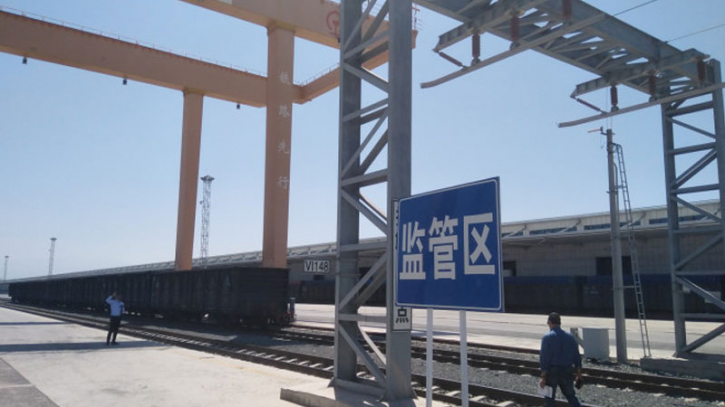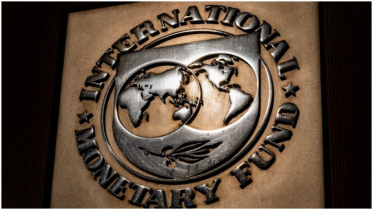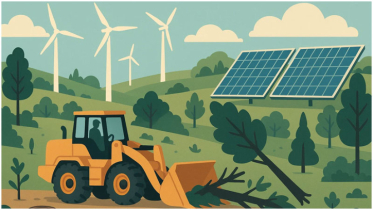World weighs gains as China's Xinjiang gears to be New Silk Road gateway

Caravans of the ancient Silk Road used to pass through Xinjiang, now the northeastern province of China, that looks set to become the hub of the New Silk Road.
The original Silk Road dates two millennia back to China's Han Dynasty, which forged trade networks throughout what are today the Central Asian countries of Afghanistan, Kazakhstan, Kyrgyzstan, Tajikistan, Turkmenistan, and Uzbekistan, as well as modern-day India and Pakistan to the south. Those routes extended more than 5,000 kilometres to Europe, crossing about 50 countries and cities.
Now China has ventured on reviving this route through a multimodal transport network of road, rail, sea and air links.
After taking office in 2013, Chinese President Xi Jinping announced his two-pronged strategy: the overland Silk Road Economic Belt and the 21st century Maritime Silk Road, first collectively called One Belt, One Road initiative, which eventually became the Belt and Road Initiative (BRI) — one of the most ambitious infrastructure projects ever conceived.
Xi's vision includes creating a vast network of railways, energy pipelines, highways towards the West through Central Asia and Africa, and also Southeast and South Asia, including Bangladesh.
The maritime route aims to link China's coastal ports through the South China Sea to the Pacific and Indian oceans.
China's colossal infrastructure investments, both at home and countries along the route, aims to usher in a new era of trade and growth for economies in Asia and beyond.
Xinjiang gearing up
The regional museum in Ürümqi, capital of Xinjiang Uyghur Autonomous Region, speaks to 10,000 visitors everyday about Chinese civilisation along the ancient Silk Roads and local ethnic cultures for millennia, including rich ancient artefacts ranging from silk to paintings, to bronze ornaments and mummies.
The magnificent Urumqi Cultural Centre also gives visitors the vivid history of the ancient silk road and relates them to the new one being revived now. Giant screens and display boards show how merchandise was transported by camels or horses to central Asian destinations through three past channels of the ancient silk road, opened by the Han Dynasty and operational until 1453.
In the city and around, huge infrastructures show how Xinjiang and its major cities like Urumqi, Kashgar and Aksu are gearing to emerge as new channels of the revived silk road.
Urumqi, the regional capital, is transforming fast to become an international city, suiting the modern day trade route that will connect China to Europe through Asia and Africa by road, rail, sea and air.
With huge road, rail and port infrastructures already built, Urumqi started to serve as the hub for the new trade route.
Apart from wide and straight multi-lane national highways stretching to borders of as many as eight countries, flyovers, rail lines, container sheds and land port facilities have been built in the city.
More are in the making.
A number of projects are in different stages of implementation and Chen Zhihong, director of the Department of Industrial Development at Urumqi International Land Port, could not say which project would be completed when.
Rail cargoes are being shipped straight to Kazakhstan up to European destinations through inter-country rail networks of 21 rail lines in 19 countries.
The spacious container sheds at China-Europe Railway Express were somewhat quiet on 21 July as officials said the last cargo train left for Central Asia a couple of days back. And goods including Made-in-China iron rods were seen waiting for the next shipment.
A cargo train carries an average 1,250 tonnes and in the first half of 2023, goods worth 21.76 billion yuan were traded by trains only through this route, the Urumqi land port executive said, while briefing a team of Bangladeshi journalists on 21 July at the Urumqi Assembly Centre for China-Europe Railway Express.
Located in northwest China, Xinjiang has built a comprehensive multimodal transport network of highway, railway and airways over the years. About 111 international highway transportation routes have been opened to five bordering nations with China.
Urumqi International Airport, already one of China's five hub airports, is implementing a 33 billion yuan expansion project to further facilitate air cargo trade and passenger transportation, primarily with Middle-Western Asian destinations.
China has poured billions into infrastructures in partner countries to help them integrate into the new trade routes.
From 2013 to December 2022, China's engagement in the BRI through construction contracts and investments amounted to about $950 billion in various countries, according to Shanghai-based Fudan University's Green Finance and Development Centre that compiled data from multiple sources.
Industries that receive BRI engagement include energy, accounting for about 37%, followed by transport (27%), metals (12%) and real estate (about 5%).
East Asian countries shared 26% of BRI engagement between 2013 and 2020, while West Asia accounted for 21%, Sub-Saharan Africa 21%, Arab and Middle East 14%, Europe 8%, South America 7% and North America 1%, data shows.
As President Xi summarises the BRI goals, China will actively promote international co-operation through the initiative. In doing so, China hopes to achieve policy, infrastructure, trade, financial, and people-to-people connectivity, and thus build a new platform for international co-operation to create new drivers of shared development.
A 2017 estimate of the Asian Development Bank (ADB) suggests that Asia needs $26 trillion in infrastructure investment up to 2030, and China is extending support to Asian and African countries to meet some of their investment needs.
In a study, the Organisation for Economic Co-operation and Development,a 38-member club of mostly industrialised countries, assessed the impacts of Chinese infrastructure investments in the economy of countries involved with BRI, which prioritises hardware (infrastructure) and funding first.
According to official Chinese announcements, so far 150 countries and 32 international organisations have signed documents to join the BRI programme.
As China's signature project enters 10 years in 2023, countries are weighing gains from their engagement with it and looking for ways to cooperate further.
Global media is also keeping an eye on the developments. The US news channel Voice of America analyses how Beijing's BRI ambitions also go beyond trade and infrastructure projects to include education, health and other sectors as China's strategy to globalise may be entering a new phase.
From Kazakhstan and Laos to Ethiopia, countries reviewed the achievements in infrastructure development under the BRI engagements and the ways to deepen the bilateral cooperation further, marking the decade of BRI.
Cambodian Prime Minister Hun Sen recalled how his country benefited from the agreement. "Thousands of kilometres of roads have been built, or are under construction, along with bridges across the Mekong, Tonle Sap and Basaac rivers," he added, noting that many other ASEAN members have also benefited since the BRI was launched in 2013, with $30 billion injected into the initiative.
What it means for Bangladesh
In 2015, Bangladesh became part of the BRI through the BCIM (Bangladesh, China, India and Myanmar) Economic Corridor, which looks to connect China's Yunnan province to India's Kolkata through Bangladesh and Myanmar by road, rail, water, and airways.
A number of measures have been rolled out since the 2016 Dhaka visit of the Chinese president, when China promised about $40 billion investment in Bangladesh, including $24.45 billion in infrastructure projects and $13.6 billion in joint ventures. In addition, $20 billion in loan agreements was committed, says a study by the Centre for Policy Dialogue (CPD).
Eight China-funded projects worth $9.45 billion, including Padma Bridge rail link, Payra power plant, digital connectivity and power grid network strengthening, were signed in 2016 alone.
Officials of China's leading electricity equipment maker TBEA, which is implementing the $1.6 billion grid upgradation project in Dhaka city, said Dhaka's consumers will get digitised electricity services when the projects are completed in 2024. Apart from installing smart metres, parts of the city's electricity wiring will go underground under the project, which will enhance the DPDC's capacity to distribute 600MW more in the capital city, a manager told visiting Bangladeshi journalists at the company office near Urumqi on 25 July.
Studies see huge promise for Bangladesh from the BRI in physical and soft infrastructures, apart from a wider access to trade with China and India as the Kunming to Kolkata corridor can reduce transportation costs and distances.
"Bangladesh's enhanced competitive strength through BRI will help it become better integrated into the global economy," says an article co-authored by CPD Executive Director Dr Fahmida Khatun and Research Fellow Syed Yusuf Saadat.
While huge resources will be required to build transport infrastructures to connect to the BCIM corridor, Bangladesh needs to reform trade facilitation and ensure timely completion of BRI projects to minimise cost overrun.
"Debts should be managed well and debt sustainability issues should be closely monitored in order to avoid any possible debt traps," the economists also suggest.
Source: The Business Standard
.png)




